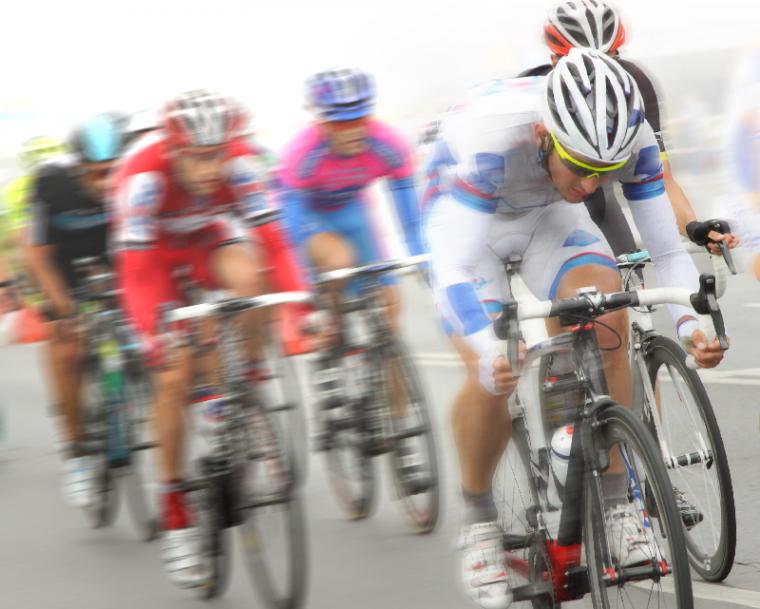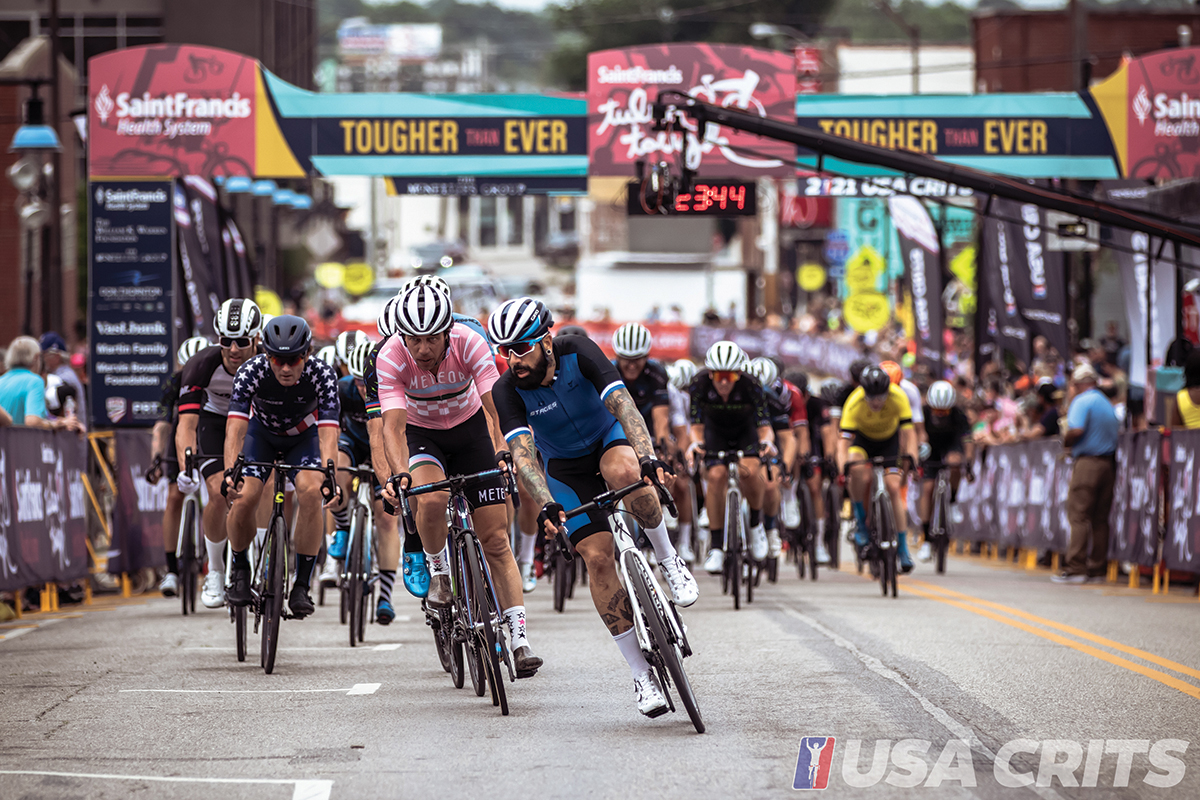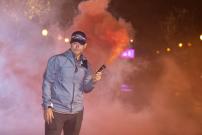

America has a rich history of criterium racing, a unique form of cycling that stresses high-speed races contested in a thriving urban atmosphere. Although an unrecognized discipline by the world governing body of cycling, criterium racing brings a unique set of skills to the sport and uses its own ranking and points system.
Because criteriums are historically run on short laps through city streets, they offer spectators the opportunity to watch Olympians and world and national champions up close as they ride at top speeds for up to two hours. Criterium racing’s ability to combine the most exciting elements of popular sports with the large-scale appeal of downtown arts and music festivals has made it the most enduring form of cycling in North America (in fact, there are over 1,000 criterium events in the U.S. alone) and the most spectator-friendly form of cycling with an ever-growing following of fans. When staged according to time-honored traditions, these races often draw more than 30,000 fans per event.
USA CRITS serves not only as an event owner of criterium racing but a broader governing body for the sport in the U.S. And right now, it’s in growth mode, seeking new cities to host its one-day events that create a festival-like atmosphere.
USA CRITS, like everyone else in the event industry, has put 2020 in the rear-view mirror and is moving forward – with a few adjustments here and there. (A typical race season runs from February through September; however, this year, that was compressed to run from the end of June through September). And while that season is getting ready to wrap up, planning is already going on for next year.
Benefits of Urban Cycling Events
Most people think of cycle races a few ways: either as oad racing the kind they see on TV in the Tour de France or mountain biking or maybe the track cycling they see in the Olympics. In fact, 60 percent of all cycling races in the USA are criterium races.
Criterium racing takes place downtown in urban and suburban markets – it’s the Formula 1 of bike racing. We turn downtown city streets into our track and the crowds get to come and watch the races for free. The good news is this lends itself to a strong festival atmosphere; in fact, the majority of our events are “twilight” races. Nighttime racing creates an intimate and exciting atmosphere in a traditional entertainment time frame.
Many events include kids’ zones, live music, expo areas, food trucks and beer trucks – and the local area really benefits from it. Shops hold sidewalk sales and restaurants offer outdoor seating. The track is short, so you’re seeing the athletes come by every few minutes. There are plenty of places to take in the action, rather than just being clustered around a finish line, the way you would at a marathon. It’s exciting to watch and because everything takes place in one day, there’s a very big economic boost during that time.
Criterium races are easy for cities to host. You don’t need to have a sportsplex or a special venue the way you would for a softball or soccer tournament. Just as importantly, there are opportunities for tie-in events. Local companies might sponsor a 5K and, of course, there are opportunities for vendors to have booths. We’ll also help you set up and host races for kids, amateurs, athletes in the master’s division and so on. We live-stream all our events, which leads to an even bigger crowd; our viewership ranges from 5,000 to 15,000.
Unlike traditional road races, like those held in Europe that might take up 60-100 miles and involve closing multiple roads, we’re putting on events that are much more compact, taking up only about three or four city blocks, and much more spectator-friendly
How Criterium Racing Differs from Tournaments
The USA CRITS model isn’t as much about heads in beds. We do have athletes who travel to participate in events – in fact, you can have 300 to 500 athletes – but because this is a one-day event, it isn’t going to drive quite as much hotel business in terms of spectators and families. Even at the top level of our events, the athletes are people who have other full-time jobs, so they appreciate a variety of hotels in different price points.
Where you’ll see the economic impact is in restaurant use and shopping in local stores; you’ll have thousands of people pouring into the downtown area for the day. Plus, the more events a community builds around it, the greater the economic impact of the criterium race. Athens, Georgia, for example, marks this as their second-biggest event, right after college football.
These races also tend to become traditions in the cities that offer them; in fact, we have a majority of events that return to the same cities year after year. People really like them. Plus, because it’s only one day and in a very small area, you don’t have a lot of disruption.
The Best Partner Cities
We’re always looking for new markets to host criterium races, and a lot of work goes into the search. We want a strong partner who can help us get the community involved – someone who has a really strong heart for cycling and an interest in growing it.
There’s no one type of city that works best for us; in fact, we have had events that do very well outside the urban centers. Littleton, Colorado, which is outside of Denver, has held very successful criterium races. At the same time, we’ve also held events in Boise, right in front of the state capital. Right now, as we’ve grown this project, we are trying for bigger markets, but if a city is interested, we will connect with them to put on something that works for them.
We don’t have just one business model, just a lot of best practices. Sometimes, the event is set up as a big charity fundraiser, such as in Spartanburg, South Carolina, where they put on the Spartanburg Regional Healthcare System Criterium.
There is prize money awarded along with wins in each city; however, it’s not necessarily up to that city to underwrite the purse. Generally, there is an organization or a group like a car dealer, hospital, insurance company or other that will work with the LOC, chamber, sports commission or CVB in that area. In fact, of the 10 events we are putting on this year, only two are funded primarily by the CVB or sports commission. In Boise, for example, the city is involved but so are a lot of foundations.
Tourism Benefits
Often, having a race in a city means that people might have heard of that place but because of the race, they get to see it. Our athletes go to places like Boise and El Paso, and they can’t stop telling us how amazing those cities are and how much fun they’re having there – and how they really want to go back there. Also, because the event is going to be featured on the live stream, viewers will see the athletes racing against the backdrop of that city, meaning people at home can get a sense of how cool a town is, and how much fun.
We encourage cities that are interested in hosting criterium racing to reach out to us, and to let us know what they’d like to do. Our athletes enjoy seeing new destinations, and we enjoy bringing our events there. After all, it’s not every day that residents of your community can sit down and watch some of the best athletes in the world for free – and it’s not every day that your community gets to have thousands of people visiting and taking in the festival atmosphere. SDM

